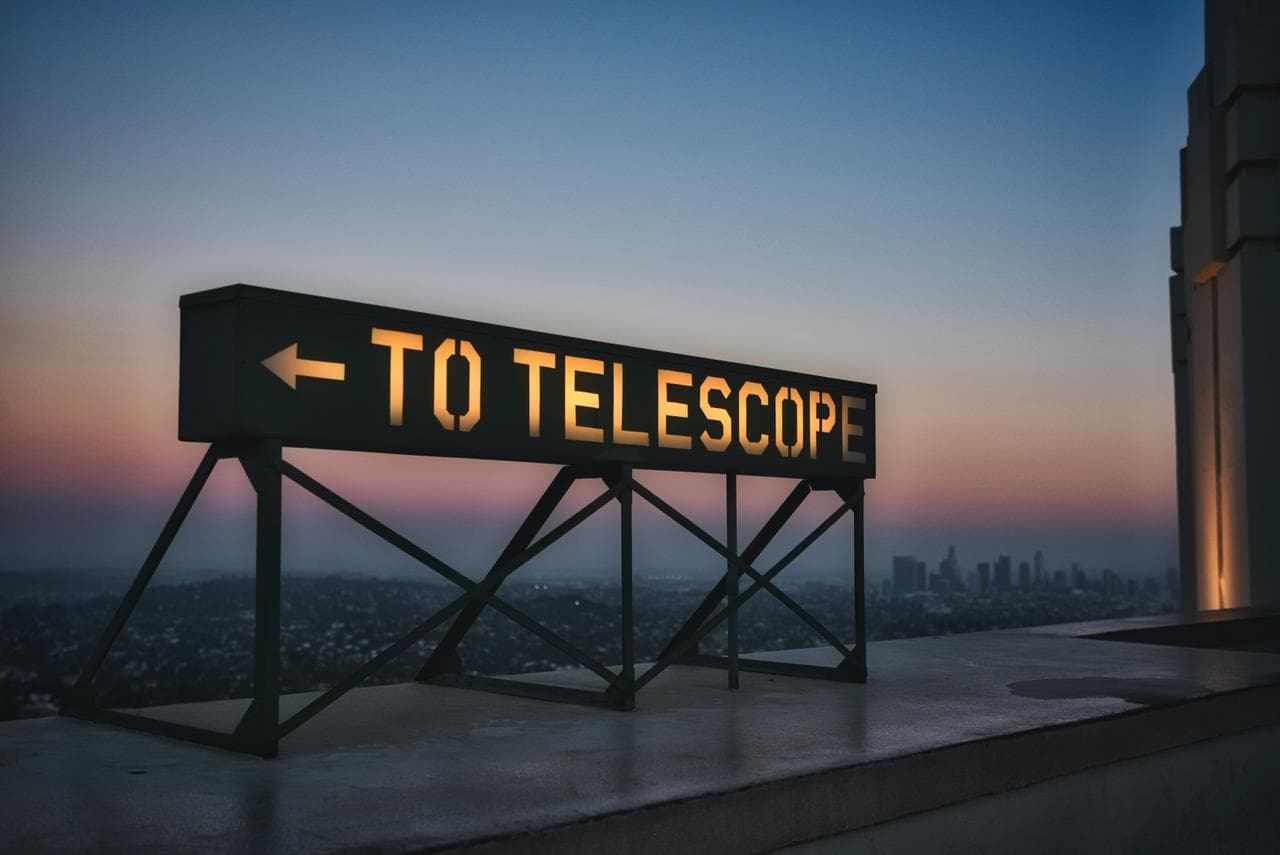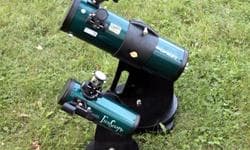
with David Fuller

There is No Perfect Telescope
Also, it's in space. Breathing there is difficult, because lack of air. So how would you even use it? But I digress.
In this post, I am actually NOT going to recommend a telescope, because often what we need to do is think about some important things so that you can get the best success with whatever telescope you decide to purchase. And this will help you think about the things that are more important to you, and which ones you may be alright compromising on.
The first, as I mentioned above, is price. Think about what you want to spend. Many people start out thinking they can get an inexpensive telescope for $100 or $200 - which is true! There are many telescopes available in this price range, most of which are vast improvements over similarly priced ones from pre-2010. But there are still compromises, even among the better ones, and some are still awful all the way around.
What often gets overlooked in the quest to find a lower cost telescope are myriad, and they are done to cut corners to hit a price point so YOU will consider buying it. Here's a list of things to keep in mind that telescope retailers will try to minimize in their sales literature so you'll think the lower cost ones are "perfect":
- Tripod strength - this often makes for impossible viewing due to shakiness). This should be a deal breaker; most telescopes under $200 have less than ideal tripods. If it's aluminum, please pass it buy. Steel is much better, but hard to find, and sometimes the plastic hardware can break on the steel ones. (Ask me how I know this.)
- Mount size - insufficiently large mounts also shake and vibrate). Few telescopes under $200 have a decent mount, except for the tabletop style telescopes. How much magnification do you want to have? Planets need it, ideally over 120x. But above 75x... good luck with a shaky mount - you'll feel seasick.
- Smooth motions of the mount - The objects you're trying to find are very often quite small. Any "jerkiness" of the mount motions make it darn near impossible to locate objects easily, much less track them as the Earth rotates. This is difficult to ascertain from even good reviews of telescopes, but think of it this way: Smaller bearing surfaces are going to be jerky compare to larger ones.
- Eyepieces - Very low cost ones like Huygens or Ramsden have very narrow fields of view (looking through a straw) or short eye relief (how close you must place your eye to the eyepiece to see anything). Many telescope manufacturers hide this fact from you in their "details" and you don't know until you get the telescope and the 2-element eyepiece says, "H20" (20mm Huygens) or 4mm SR (4mm Ramsden). 3-element Kellners are at least adequate; 4 element Plossls are even better.
- Magnified finders - if it says 5x24, there's a good chance it's actually stopped down even smaller inside the tube, and is virtually useless. (Ask me how I know!) Look for at least a 6x30, or plan on getting a 6x30 or larger aftermarket finder, because they allow you to see stars you can't see naked eye. This helps in locating dimmer objects.
- Red dot finders - these are strangely enough an improvement over the 5x24's, but the problem is still that you can only point the telescope at what you can visually see, unless you're really good at mental sky geometry (some people are). This is a compromise, low-cost finder - so, can you live with it for a while? You might only see the Moon / planets / very bright objects until you can upgrade.
- Primary optics - in general, the main optics (lens or mirror) of most budget telescopes are actually pretty good these days. But, refractors are being made in 'faster' (shorter) focal ratios/lengths (f/4 or f/5). If not ED glass or apochromatic, this increases an optical flaw called chromatic aberration, where purple/blue/yellow colors don't quite come to focus and you see "fringing" of those colors on brighter objects. For reflectors, faster optics means a different aberration, called coma. The further towards the edge of the field of view and the "faster" the optics (f/4 and f/5), the more pinpoint stars look like seagulls. And if the mirror is a spherical grind rather than a more costly parabola, the image can be worse still. But, in the middle of the field of view, where we mostly tend to look anyway, the image is usually just fine.
- Collimation - for refractors, this is set at the factory, and never needs adjustment. But for reflectors (and to a lesser extent, Schmidt Cassegrains), it may either be set for the primary mirror and adjustable for the secondary, or adjustable for both. For newbies, this can be a challenge to understand this and adjust it. It's less of an issue for the non-adjustable primary mirrors of inexpensive tabletop telescopes. But if it's "off" a little from the factory, the view may not be perfect. Though, you're probably looking at having coma anyway. And the reflector gives you more aperture than a refractor for the same amount of money. It's a trade off!
- Weight - What are you willing to move? I put this in here because as I mentioned more aperture means seeing more (both in collected light as well as being able to push magnification higher), but that also means more weight to move. In bigger telescopes, it may mean more complexity to set up... in the dark! Overall, either the lens/mount are bigger (refractors / catadioptrics), or the mirror/telescope as whole is also bigger (reflectors). How much are you okay moving to set up? How much are you okay putting in your car, driving, and setting up in the dark?
- Astrophotography - let's just say, you can't really do this with any kind of amazing results for less than $1,000, unless you're talking cell phone astrophotography. So let's not go here, except to say GOOD astrophotography rigs are $3,000 and up (usually WAY up). So temper expectations on getting Hubble photos from your small telescope. ;-)
Telescope manufacturers make telescopes to hit price points. They incorporate compromises in design to fit various needs. The question comes down to this: Based on all the variables above, what is right for YOUR situation? Most every amateur astronomer eventually buys more/better eyepieces, and often upgrade their finderscopes. So you might plan for that not long after getting a telescope, if you find you enjoy it and want to do it more.
That may mean getting a telescope that is within your budget now, and either planning to get better accessories in the future, or upgrading to a better telescope altogether if you like amateur astronomy and want to stick with it.
Knowing that, what compromises do you make on the rest of the system? Do you want to sit while observing? Stand? A tall refractor is going to shake in windy conditions, and needs a heavier/steadier tripod. And a reflector's eyepiece is naturally higher up. But are you okay doing collimation at all? Or do you have someone who can help you with that until you learn it yourself? Does the telescope your considering need collimating at all, or only minimal amounts?
And how heavy is the whole set up? Can you move each piece okay by yourself? You may not know if chromatic aberration or coma will bother you at the eyepiece before buying. But it will be very difficult to overcome vibrations of a flimsy aluminum/lightweight tripod, or a mount that is WAY too small for the telescope it's on. There's only just so much screw tightening and balancing you can do before the shakiness is just part of the problem. Maybe you'll decide you're okay with collimating instead of putting up with shaky views.
See... look at that. I didn't recommend a single model of telescope in there. But what I have hopefully done is gotten you to think about the various compromises telescope manufacturers have designed into telescopes so that they are beneath your budget limit, so you can decide which compromises built into them are acceptable, and which ones are unacceptable.
Still got questions? Shoot me an email or get in touch with me on Facebook. I'll try and help. And I wish you clear and dark skies... as soon as you get that first new telescope, the "Amateur Astronomer's Curse" of several cloudy nights will almost assuredly follow!


